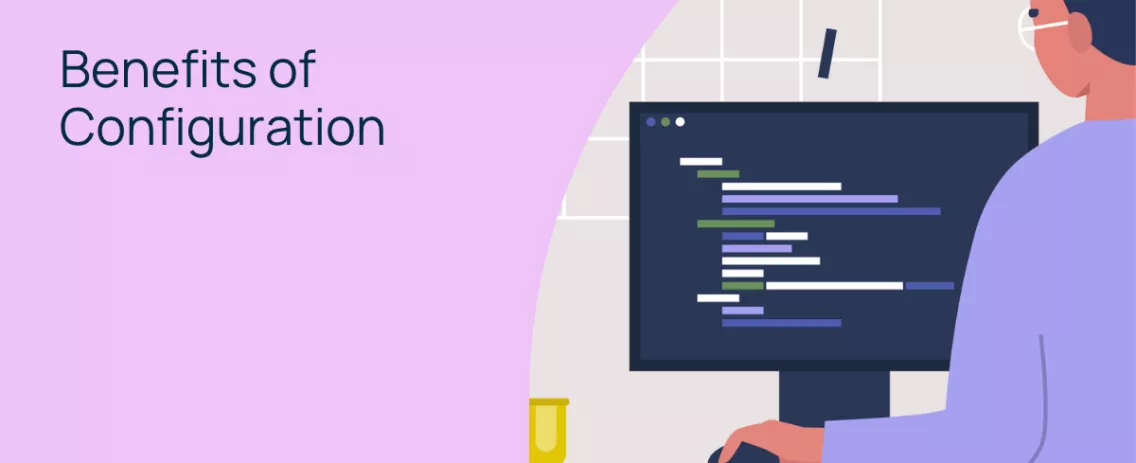
Tailoring Trade Promotion SaaS Software for the CPG Industry
As with any vendor application, there are, broadly speaking, two approaches you can take when looking to adapt a consumer packaged goods (CPG) SaaS application to your particular business needs: customisation or configuration.
Customisation involves modifying the underlying code, interface, or functionality to meet the specific and unique requirements of a given CPG business, thereby tailoring the software to align with the organisation’s specific processes, workflows, branding, or other industry-specific needs.
Configuration involves using the settings and parameters offered by the application to meet the specific requirements for a given implementation, without the need for making changes to the underlying application code.
As with everything in software, each approach comes with a set of tradeoffs, and the right option for you will likely vary by use case and individual company circumstances. The aim of this article is to provide you with an overview of the various pros and cons, enabling you to make the best decision for your particular scenario.

The pros and cons of customisation
Taking customisation first, it provides you with the most flexibility, allowing you to tweak and change the product to meet more or less any requirements you or your organisation may have. However, it also requires you to have programmers with the relevant skills, including a deep understanding of the vendor software’s underlying architecture. Customisation will also inevitably slow down the initial implementation, as requirements will need to be gathered and analysed, and then the code to meet those requirements will need to be written and tested.
Taking this approach can also cause longer term challenges which are perhaps less obvious, and need to be weighed-up against the potential benefits in terms of flexibility.
For one thing a heavily customised solution may conflict with subsequent upgrades to the underlying platform, requiring re-work from your organisation’s development team. This may force your company to stay on an older version of the vendor platform for longer than it would ideally want, or it might require your organisation to make a substantial further investment in development time and resources each time you wish to perform an upgrade.
It is worth saying too that coding errors that may be introduced as a result of taking this approach can result in increased outages or other operational disruption and may also expose an organisation to additional security risks. Furthermore, customised software typically cannot be fully supported by the vendor, therefore needing ongoing support from your in-house IT team.
When you factor in the initial development costs, ongoing maintenance, and potential challenges during upgrades and migrations, the total cost of ownership will also generally be higher with a customised approach.
Configuration as an alternative to coding changes
As an alternative, configuration is more limited less flexible. It does, however, require less technical expertise, particularly if the configuration options are supported directly through the application’s GUI. Because of this the initial implementation will be faster, and a mature SaaS platform will typically have extensive configuration options that can cover the vast majority of use cases.
The modern consumer packaged goods industry is highly dynamic, and organisations have to be able to adapt to stay competitive. Market trends, consumer preferences, and industry dynamics can change rapidly, requiring organisations to quickly adjust their strategies and operations. As an approach, configuration offers valuable flexibility. Businesses can readily adjust their software settings and options to align with changing market trends, or to respond to new requirements in, for example, reporting or governance.
Moreover, software that has been tweaked through built-in configuration is supported by the SasS vendor. This provides you with an easier path for upgrades, and the reassurance that vendor support is available should you encounter any issues in production. Because of this, a SaaS product that has been tweaked to meet an organisation’s needs through configuration will generally have a lower total cost of ownership than one that has been customised at a code level.

Visualfabriq’s approach
As a company that was founded as a purely SaaS offering, Visualfabriq is unique in the market. We’re also confident enough in the flexibility of our product that we feel comfortable with having taken a purely configuration-based approach to meeting customer use cases. Indeed, in the last few years, we are yet to come across any business process that we could not accommodate through configuration, as evidenced by the fact that our very first customer is still on the most up-to-date codebase after approximately ten years, and they have continued to expand their use of our offering with the deployment of additional modules.
It is not uncommon, particularly for smaller vendors, to end up maintaining multiple different versions of their products to meet different client needs, but we’re firmly against this, as it becomes extremely difficult to maintain the different versions and to scale our own business. Instead, if a customer has a good idea for the product it is submitted to Visualfabriq’s product organisation and evaluated: if accepted, it can be added to the roadmap, implemented and made available so that all of our customers can benefit from it.
Ultimately, it is important for organisations to carefully evaluate the trade-offs between customisation and configuration, considering their specific needs, resources, and long-term goals. The choice you make between these two approaches will vary depending on both individual requirements and distinct circumstances. Whilst customisation may be essential in rare cases to get some specific functionality or to gain a competitive edge, configuration generally presents a more efficient, scalable, and cost-effective method for tailoring SaaS software to align with the specific needs of the CPG industry, and is therefore the approach we’ve taken at Visualfabriq.
To learn more about our Revenue Management software and book a demo now.

.png)

